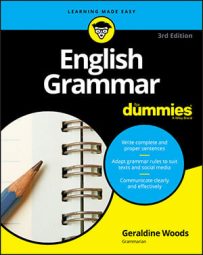WRONG: The star soprano of the Santa Lola Opera, Sarah Screema, sings more loudly than anyone in the cast.Here's another problem. Can you find it?WHY IT'S WRONG: The sentence makes it clear that Sarah is in the cast, but the comparison implies that she's not in the cast. Illogical!
RIGHT: The star soprano of the Santa Lola Opera, Sarah Screema, sings more loudly than anyone else in the cast.
Max's nose is longer than Michael.Okay, before you say anything, Michael is tall — not skyscraper tall, but at least six-two. Now do you see what's wrong with the sentence? Max's nose, a real tourist attraction for its length and width (not including the pimple at the end) is about four inches long. It is not longer than Michael. It is longer than Michael's nose.
WRONG: Max's nose is longer than Michael.Here's the bottom line:RIGHT: Max's nose is longer than Michael's nose.
ALSO RIGHT: Max's nose is longer than Michael's.
- Make sure your comparisons are logical.
- Check to see that you have compared what you want to compare — two things that are at least remotely related.
- If the first part of the comparison involves a possessive noun or pronoun (showing ownership), the second part of the comparison probably needs a possessive also.
The SAT Writing section and the ACT English section both test you on comparisons, highlighting the issues covered here.
Which sentence is correct?A. The pug is cuter than any breed of dog.Answer: Sentence B is correct, at least in terms of grammar. (Please feel free to cross out "pug" and substitute your favorite dog breed.) By definition, a pug is a dog, and sentence A implies that pugs aren't. The word other in sentence B returns pugs to dogdom.B. The pug is cuter than any other breed of dog.
Another common error involves creating comparisons out of absolutes — characteristics that can't be compared. Nothing is more unique. The word unique means "one of a kind." Either something is one of a kind, or it's not. No halfway point, no degrees of uniqueness, no . . . well, you get the idea. You can't compare something that's unique to anything but itself.
The word unique is not unique. Several other words share its absolute quality. One is perfect. Something is perfect or not perfect; nothing is very perfect or unbelievably perfect or somewhat perfect. (One exception: The United States Constitution contains a statement of purpose citing the need to create "a more perfect union.") Another absolute word is round. Your shape is round or not round. Your shape isn't a bit round, rounder, or roundest.
You can't compare absolute qualities, but you can compare how close people or things come to having those qualities.
One more word causes all sorts of trouble in comparisons: equally. You hear the expression equally as quite frequently. You don't need the as because the word equally contains the idea of comparison.

